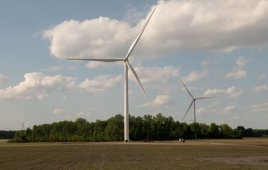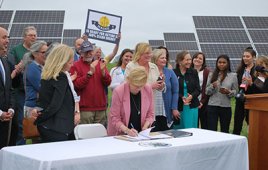A power and automation technology group has released its annual estimate of the savings achieved by its installed base of drives. ABB says about 310 million MWh of electric power was saved by ABB drives in 2011, an increase of 19% over the previous year. Electric drives regulate the speed and power consumption of electric motors. Industrial electric motors account for about 25% of all the electricity consumed worldwide.
A drive is an electronic device used to regulate the performance of an electric motor. It works by controlling the power, frequency, and current the motor draws from the grid. Reducing a motor’s speed by half using a drive can reduce the energy it consumes to one-eighth of its consumption at full speed.

Energy accounts for 92 to 95% of the life cycle cost of a motor, depending on its size, so an investment in electric drives typically pays back in less than two years.
The company says savings from the drives in 2011 is equivalent to 260 million tons of CO2 emissions. Also, the drives helped deliver electricity costs savings of about $34 billion for customers.
“The future potential for energy and cost savings is enormous, since only about 10% of industrial motors are combined, currently, with electric drives,” said Ulrich Spiesshofer, member of the Group Executive committee and head of ABB’s Discrete Automation and Motion division. “Using energy more efficiently will remain, for a significant time, the biggest opportunity available to cut energy consumption, as well as costs and emissions.”
A drive is an electronic device used to regulate the performance of an electric motor. It works by controlling the power, frequency, and current the motor draws from the grid. Reducing a motor’s speed by half using a drive can reduce the energy it consumes to one-eighth of its consumption at full speed.
ABB’s annual savings estimate is based on a comparison of the average electricity consumption in applications with and without drives. Many electric motors not equipped with drive technology run at maximum speed and are simply throttled if less performance is needed.
ABB
www.abb.com
Filed Under: Uncategorized




